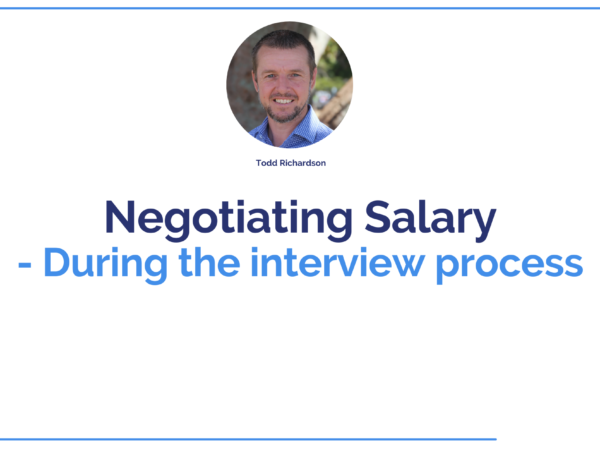In the marketing and sales arena lives a useful five letter acronym called ‘WIIFM’.
Broken down, WIIFM stands for: ‘what’s in it for me?’ and its principles have long been used by professionals in this area to ensure their audience successfully receives their communications.
But, while mainly used as a marketing tool, I would argue that the concept of WIIFM is important to adopt in many parts of our lives. And its application should not be overlooked by those entering the job search process.
So, what is WIIFM?
In its simplest form, WIIFM is a guiding principle used to engage a target audience by answering the question that drives most of our decision making: What’s in it For Me?
WIIFM is about speaking the language of benefits (what the audience is buying), not the language of features (what you’re selling).
It acts as a reminder that when trying to persuade someone of something, you should lead with the needs of the person you’re selling to.
Applying WIIFM to your Job Search
So, how does this all relate to your job search?
Well, when entering the job search process, you’re essentially the ‘seller’ and anyone you’re trying to persuade of your value as an employee is the ‘buyer’.
Approaching the process guided by the WIIFM principles, both in your resume and in interviews, will put you in a much stronger position to effectively communicate the benefits the employer will gain from hiring you.
This is something you CAN NOT achieve by simply telling them about your ‘features’ – putting together a chronology of your work history and the skills and responsibilities of your previous roles.
Yes, this information is important to discuss, but if this is the only thing you’re communicating, you’re falling short on effectively explaining to them your ‘benefits’.
To do this well, however, you first need to understand what the prospective employer wants. And from the construction perspective, I can tell you that builders are looking to understand:
-
- how you’re going to mitigate risk for the business;
- how you’re going to deliver them successful project outcomes; and
- how you’re going to integrate into their culture.
This is their ‘WIIFM’, and you need to play into it.
Unfortunately, cultural fit is hard to convey. That comes down to whether the employer and you gel on a personal level. But everything outside of this can be communicated!
You can showcase your ‘benefits’ by giving examples of how you have:
-
- solved problems;
- reduced risk;
- shaved time off programme;
- employed effective stakeholder management;
- improved systems/processes; and
- ran projects to produce successful outcomes in the past.
But don’t just name your achievements, provide evidence of them! We’ve discussed this before but here are some other ideas for you:
A Contract Administrator discussing what procurement strategies they employed on a project and how they were successful.
A Project Manager detailing how they applied value-engineering to a project to meet budget or programme.
Make sure you communicate this information both on your resume and when you’re interviewing with a prospective employer. This is the sort of stuff that will speak to their ‘WIIFM’ and build confidence about hiring you.
Looking for your next construction job? Search our current construction roles here, or to chat to our team about securing your next opportunity, get in contact with us through our Contact Us page.
Receive our updates straight to your inbox



